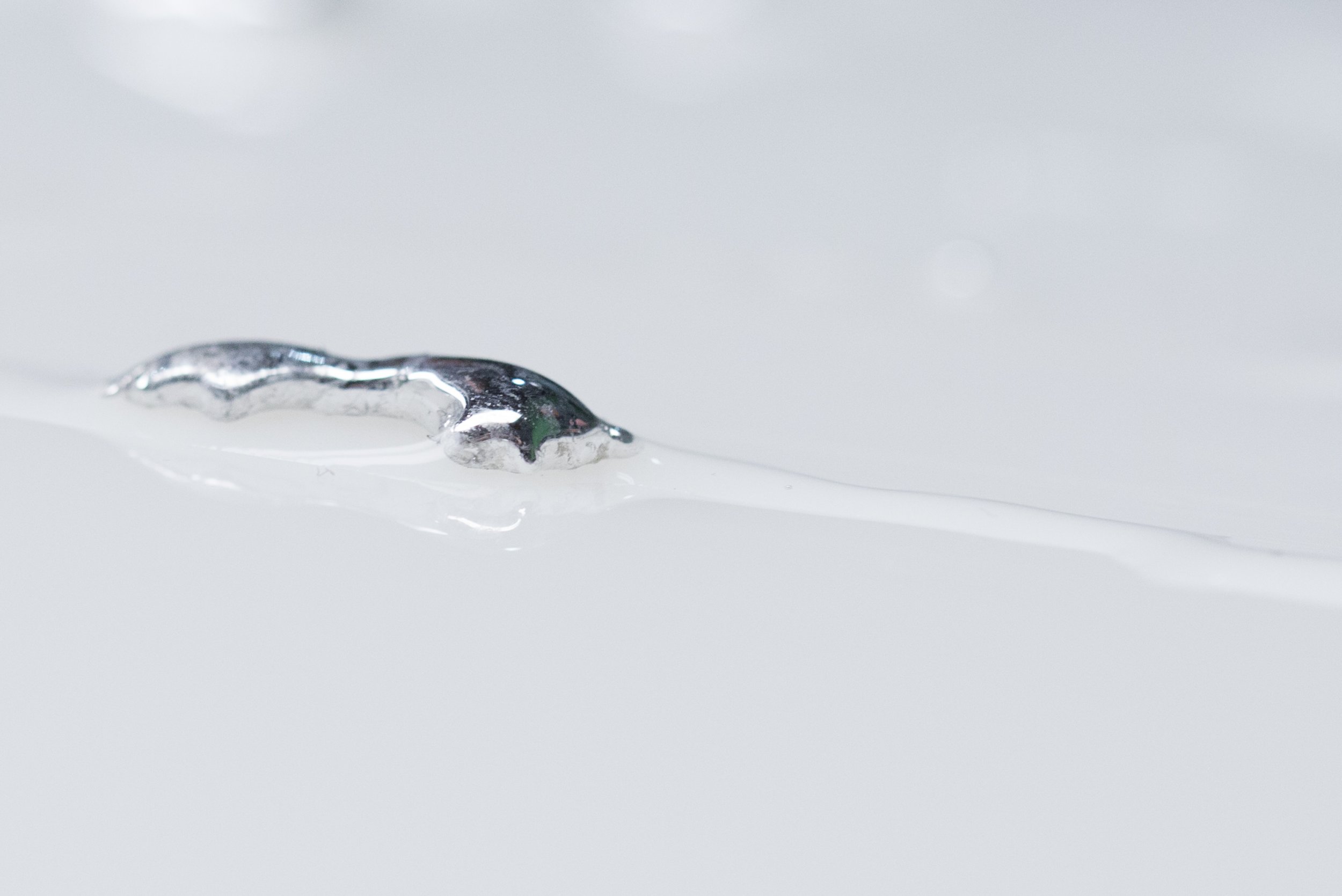
Scientists have developed a technique to create ultra-thin metal compounds called oxides. Because this is the same type of structure that powers your smartphone touch screen, finding a cheap and easy way to produce thin oxides could be very valuable indeed. The team has reported the advance in a paper published in Friday's issue of Science.
The technique uses a group of alloys called liquid metals. Of course, all metals can become liquids if heated enough, but these are special—they are liquid at room temperature. Specifically, the team used a liquid metal called galinstan, a mix of gallium—a metal with a super-low melting point that helps keep the entire mixture liquid—tin and indium.
Most metals naturally develop thin layers of oxides on their surfaces from interacting with the oxygen in the air. (The most common example of this process creates rust.) But while rust is usually something to be discouraged, scientists are looking for better techniques to create the oxides that power our smartphone touch screens.
It's these oxides that respond to electrical stimulation from your fingers (and that annoyingly ignore the fingertips of non-electronic gloves during the winter). Phone screen manufacturers use narrow strips of oxides to form a grid on either side of the screen. Those strips are essentially wires that tell the phone's processor where you tapped your finger.
In order to determine whether the technique really worked or was simply a fluke, the research team tried to create oxides of three different metals, each with very different chemical properties: hafnium, aluminum, and gadolinium.

The team mixed each metal with the liquid metal galinstan and then touched the droplet to a surface. That sounds daunting, but in a press release, the scientists say the technique is simple enough for an amateur to use in a kitchen.
When the droplet touches the surface, it leaves behind a thin layer of oxide, like a greasy palmprint on a window pane. In the case of the hafnium oxide, the layer was just 0.6 nm thick—a fraction of the width of a cell in your body. The gadolinium oxide layer was equally thin, while the aluminum oxide sheet was about twice as thick.
Currently, the most common oxide in phone screens is indium tin oxide, nicknamed ITO, but scientists have already been exploring alternatives because many manufacturers find it a pain to work with. Opening the door to a wider variety of cheaper oxides could be the first step to making that process as easy as swiping a finger across a screen.
Uncommon Knowledge
Newsweek is committed to challenging conventional wisdom and finding connections in the search for common ground.
Newsweek is committed to challenging conventional wisdom and finding connections in the search for common ground.
About the writer
Meghan Bartels is a science journalist based in New York City who covers the science happening on the surface of ... Read more
To read how Newsweek uses AI as a newsroom tool, Click here.








